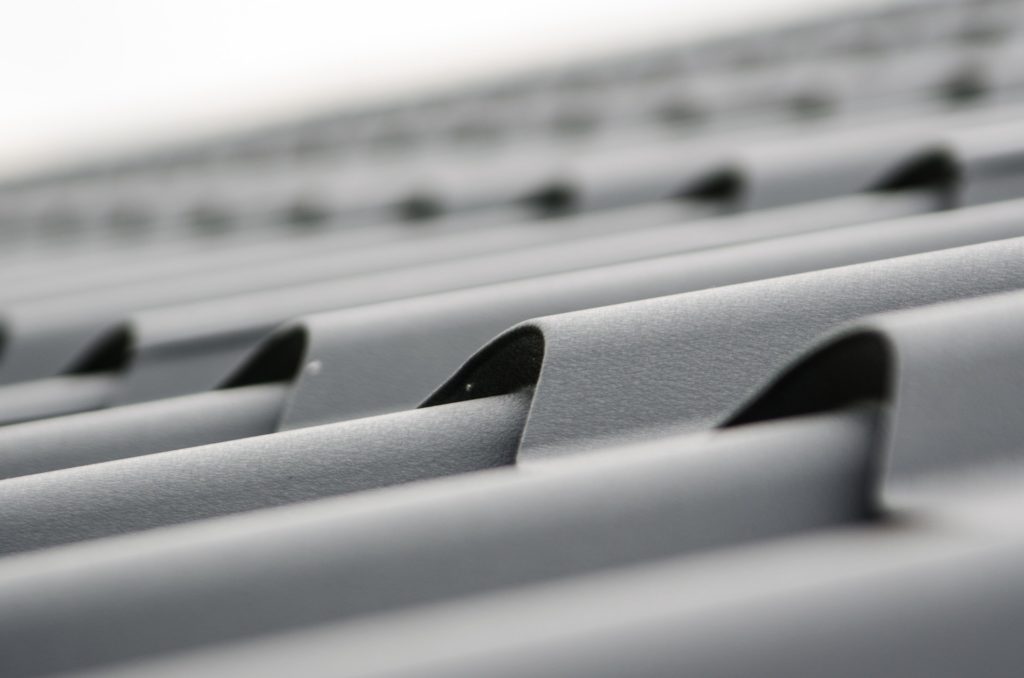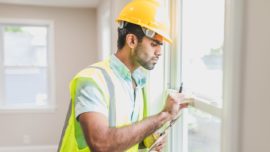
There are a lot of different extension roof types out there to help you really make yours your own, and it can truly transform the structure as a whole if you make it perfect. The hard part however is knowing exactly what will make it exactly what you want it to be. There is a huge range of options at your disposal after all, as there always is with anything to do with the incredible project that is a house extension.
Extension Roof Structure Types
The first step in finding the best extension roof for your project is to think about the structure and the shape of the roof itself. Once you have that nailed down, you can begin to move into the features that you want it to have and the materials that it should be made up of.
Sloping Roof (pitched)
Sloping roofs, or pitched roofs, and one of the most common examples seen. They have just one downward angle, with the highest point being connected to the original property. This helps them to be one of the easiest and cheapest options that you can have, and also helps them to really blend in with the rest of the property too.
Dual Pitched (gable)
Dual pitched roofs (and often gables) are another massive popular way to go about finding the perfect extension type for your roof. They are often in keeping with the rest of the property which is one of their main selling points. They also have such a versatile potential, able to look incredibly modern or though and through traditional depending entirely on what you have done with the rest of the design.
Flat Roof
Flat roofs are one of the easiest roof options you have at your disposal. They are almost always the cheapest and the fastest option for your extension, which is a great money saver and still incredibly practical. It also opens up a few unique doors too, but we’ll come onto this shortly.
Hipped Roof
Hipped roofs are one of the more complex but often more decorative extension roof types, able to offer you a wide variety of appearances depending on your material choices as well as helping to create more open space within the extension itself dependent on structural choices.
Roof Features
Once you have determined the ideal shape type for your extension’s roof, it’s then essential to consider which features you’d like it to have, or if you’d rather keep it all simple and consistent with the rest of the property. This is as much about aesthetics as it is about practicality for the internal space after all.
Lantern
Lanterns are a great way to get a large amount of sunlight coming through even just a small space in your roof. What’s even better still with the roof light is that they fit well with any type of roof because of their shape variations and how they can fit in with the room. They’re certainly a popular choice.
Atrium
Atrium roofs offer much of the same features of a roof lantern type roof for your extension but on a much larger scale. They are where almost the entire roof is glass, much like a lantern does with a small space. By using multiple atria for your roof however you can really create a truly bright and inviting space.
Skylight
Skylights are another highly popular type of roof feature to find in an extension because of their sheer practicality. They mean that you are able to save a huge amount of money by just having a select few skylights carefully placed throughout the roof, which still gives that all-important natural light to the space that you are working with.
Full Glass Panels
Full glass panels aren’t as widely seen as the other types of roofs that we have looked at, but they are still a seriously impressive feature for any property to have if it’s done well and in line with the rest of the extension. They are essentially one skylight than
Overhang
Another common roof style feature for extensions, especially with more modern, glass centric and flat-roofed extensions, is an overhang. Having an overhang on the roof is great for adding an extra edge to your design, as well as helping to keep out blinding sunlight, hiding the rest of the roof, and generally creating a stunning aesthetic. It’s a great option.
Green roof
Green roofs are one of the most inventive up and coming trends for roof options at the moment, and with the potential that they offer it’s easy to see why. Having a green roof made up of natural plants or flowers are a great way to create natural insulation to keep heat in and out, create eco-friendly designs, and look stunning all at the same time.
Roof Materials
The materials that you choose to use have a big impact on the types of roof your extension has available to it, just like the desired style and features do too. Both finishes and structure can be tailored to your project, so it’s well worth knowing about what’s available and how it can impact your build.
A large number of people prefer to start by looking at the finish options that their extension has, and then work backwards into the structure. This is of course down to your priorities, but it’s where we’ll start non the less.
Tiles
Tiles are the most commonly used finish on just about any extension roof type that isn’t flat, as the tiles of course need a slope to get water off the roof when it rains. They are pretty easy to get a hold of which is always useful, and they are not unusually costly, as well as often being the best-suited finish to fit in with the rest of the street and your own property too.
Shingles/Sheets
Shingles are again another commonly seen roofing choice for many buildings, both residential and even external, like sheds or garages. They are much cheaper than most other roofing options, and as the material can be bought in shingles or in sheets too, it can cover a wide range of things.
GRP or Composite Rubber (flat roofs)
GRP roofing is another highly efficient option for whatever type of extension roof you can have. The advanced technology that goes into the production and development of the material means that there is very little chance of issues when it’s installed, and it requires next to maintenance too. Add that to low costs and an ideal material for a flat roof, it’s a great way to go.
All in all, there are so many options at your disposal when looking into the best type of roof you’re your extension, and it comes down to budget and preference just as much as effective designs and preference.
Whatever you want from your extension, it’s always worth speaking with people that really know what they’re talking about. Any competent architect or designer will be able to help you make the right decision. If you’re still unsure, why not speak to the CK team today.





